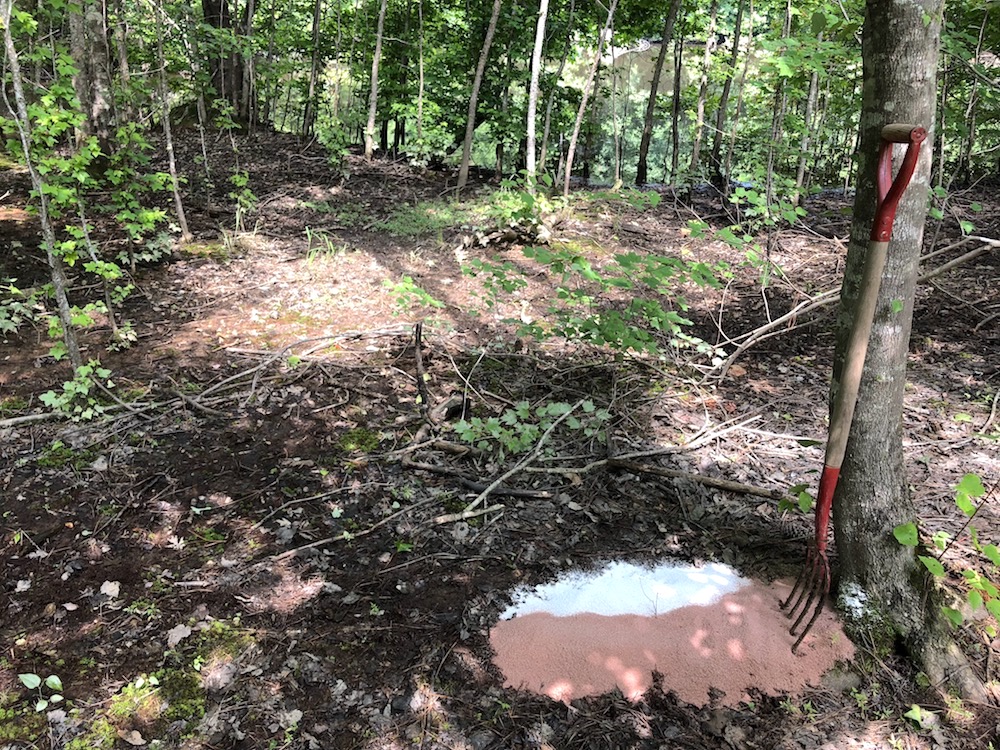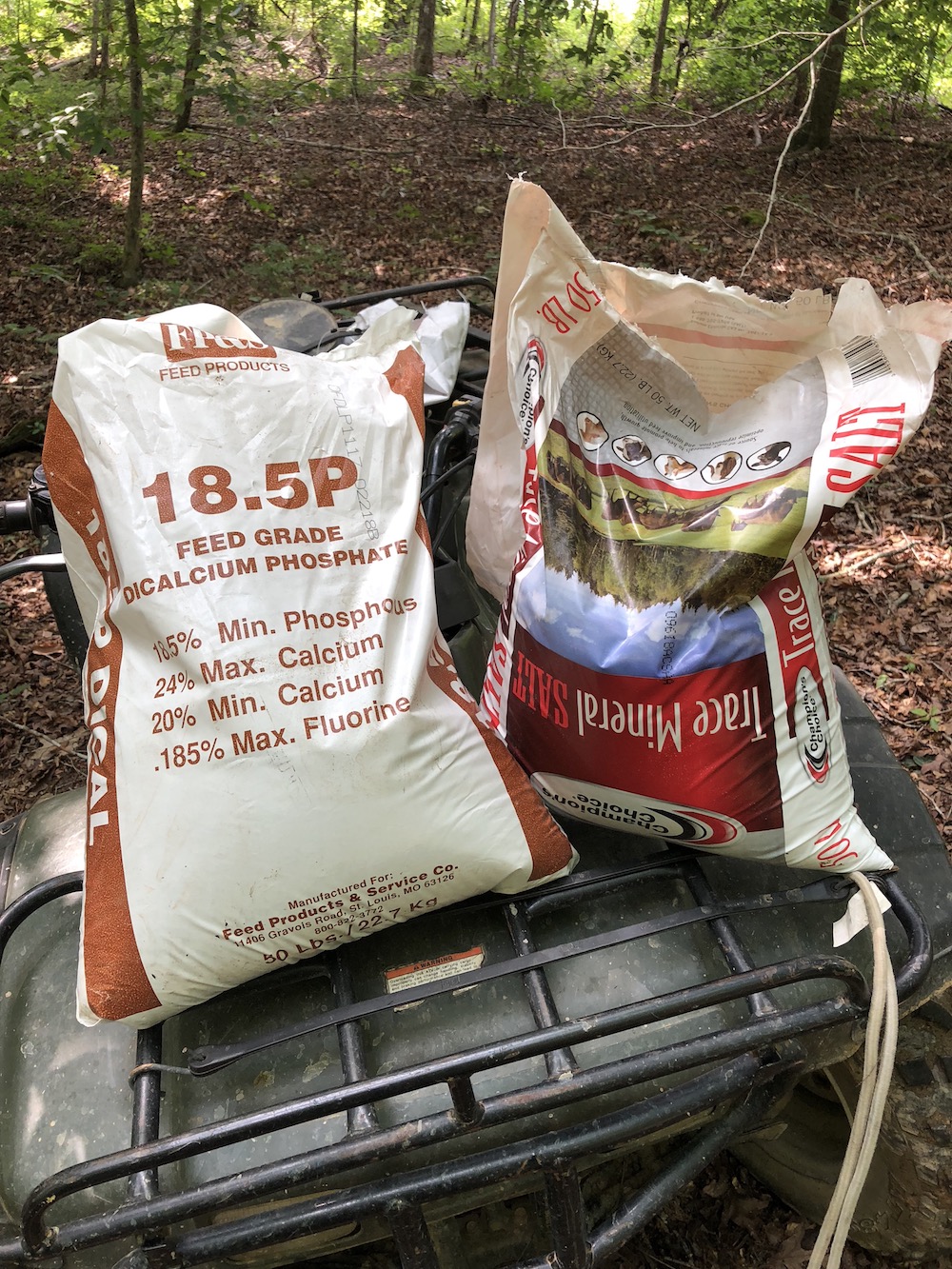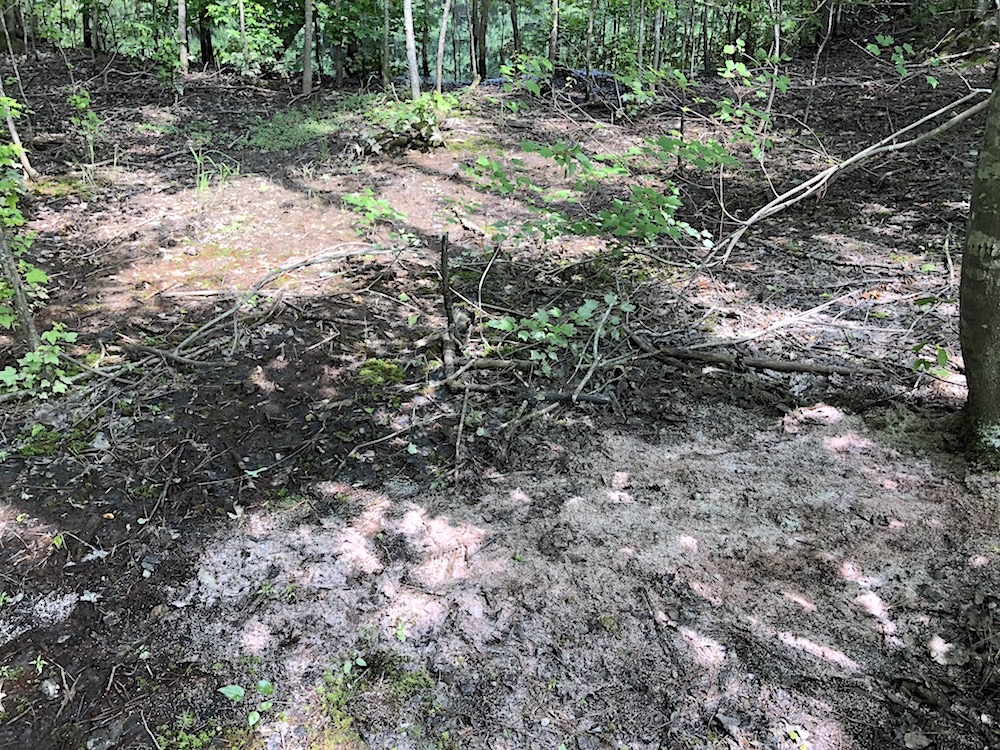It’s that time of year again for heat, humidity, bugs, snakes and mineral licks. Have you ever wondered why deer hammer mineral licks in the warm-weather months more than any other time of year? It’s simple: they need the salt because the forage they are eating in summer is high in water and potassium, thus creating a salt deficiency. Deer, during this time of year, are actively searching for it. This is also why mineral licks make excellent trail camera spots in the summer.
So why not just pour salt out for the deer if that’s what they're after? Salt alone doesn’t contain all the minerals bucks need for antler growth, nor does it provide what's essential for does, fawn development and milk production.
Studies show that there are about 11 minerals in deer antlers. Many of these minerals only make up a fraction of a percent of the antler. The two main minerals found in hardened deer antlers are calcium and phosphorous. These make up about 60 percent of the total weight of the antler. About 40 percent is composed of protein. However, when antlers are in the velvet stage and growing, they contain about 80 percent protein and 20 percent phosphorous and calcium.

Here's a new mineral lick being established with trace mineral salt and dicalcium phosphate. Notice the pond in the background. The best mineral sites are located near water sources.
This sheds light on why quality forage high in protein is needed during the spring and summer for deer to reach their antler potential. Mineral licks aren’t going to magically grow trophy racks on a buck’s head, but they are a piece of the management puzzle. Think of minerals more like a vitamin, filling the gap in any deficiencies that might exist in a deer’s diet.
Now that we have an idea of the role minerals play in your management plan, let’s look at the recipe.
Mineral Lick Recipe
Ingredients
- 50-pound bag of dicalcium phosphate
- One or two 50-pound bag(s) of trace-mineral salt

For about $50 or less, you can buy all the ingredients you need to make several productive and quality mineral sites for deer.
While there are a number of commercial products available to create mineral licks, a more affordable and perhaps better option is to drive down to your local feed and seed or farmer’s co-op and buy a 50-pound bag of dicalcium phosphate and one or two 50-pound bag of trace-mineral salt. The diacalcium phosphate costs about $25 to $30 and the trace-mineral salt is about $12 to $15 per bag. These products are used for raising livestock, but are exactly what you need for creating a quality mineral site.
Dicalcium phosphate contains around 19 percent phosphorous and 20 to 25 percent calcium. Trace mineral salt contains mostly salt, which is what the deer are actually looking for, and various other trace amounts of minerals such as zinc, manganese, iron — all of which are found in hardened deer antler.
Instruction
Once you have your supplies it’s time to start making mineral sites. Or maybe you have an established mineral site that you need to freshen up. Just be sure to dig up some of the existing dirt and mix the trace mineral salt and dicalcium phosphate into the soil. You can use a 1:1 or 2:1 (two parts salt and one part dicalcium phosphate) ratio for your mineral site.
Important Note: Minerals on their own are bitter, so be sure to mix in plenty of salt to attract the deer. If you notice no deer sign after a few weeks, then mix in more salt to the site.
If you don’t have established mineral sites, then you’ll need to make some. The best places for minerals are around a water source — ponds, creeks, lakes, etc. As you can imagine, after a deer paws up and eats a bunch of salty dirt, it’s going to need a drink. Find an area located in some cover close to the water source. Be sure it’s in close proximity to a good tree for a trail camera, too.
Next, clear the ground to bare dirt, about 3 feet in diameter. Then use a shovel or pitchfork to turn up the ground. Pour your mineral contents all over the turned-up ground and mix it in with the shovel or pitchfork. Once you’ve thoroughly mixed the minerals with the soil, you’re done.
Watering Note: If there’s no rain in the forecast, consider watering the mineral site. Simply use a bucket with nearby pond or creek water to do this.

Here's the finished mineral site with dicalcium phosphate and trace mineral salt thoroughly mixed together with the soil.
How Many Mineral Sites Do You Need on Your Property?
A good rule of thumb is about one site per 100 acres of property. You can do more or less depending on the amount of use you get at a site. But generally, one per 100 acres will ensure that the majority of the deer will have easy access to a mineral site.
That’s all there is to it. Once you begin your mineral-lick program, keep in mind that you’ll want to refreshen them throughout the year to keep them attracting deer and providing the minerals they need. It’s best to get started as soon as spring green-up starts taking place, but keeping minerals out year-round is better. Again, this isn’t a magic trick that will ensure you have trophy bucks running around your property, but you’ll at least have peace of mind that your deer have access to all the minerals they will need to stay healthy and to develop antlers and healthy fawns.






